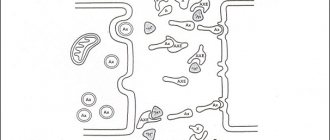pharmachologic effect
The substance carnitine is a metabolic agent. It provides stimulation of metabolic processes, taking an active part in various parts of energy exchange. The substance helps to activate lipid metabolism, stimulate regeneration processes, increases appetite , and acts as an antihypoxic, anabolic, and antithyroid agent.
This is a natural substance similar to B vitamins Carnitine in the body mobilizes fat from fat depots.
A neurotrophic is also noted ; the drug restores the structure of the nervous tissue and limits the affected area. Under the influence of carnitine, apoptosis is inhibited.
When used in the body, normalization of fat and protein metabolism is noted, and increased basal metabolism in patients with hyperthyroidism , since carnitine is a partial antagonist of thyroxine . Reduces the production of ketoacids , restores the alkaline reserve of the blood , but does not affect blood clotting. Increases the level of tissue resistance to the effects of toxic decay products. Demonstrates antihypoxic properties and stimulates reparative processes.
L-carnitine solution for intramuscular and intravenous administration 200 mgml 5ml N 5
Compound:
1 ml of the drug contains:
active substance:
levocarnitine – 200.0 mg;
excipients: 1 M hydrochloric acid solution - up to pH 6.3 - 6.5, water for injection - up to 1.00 ml.
pharmachologic effect
Pharmacotherapeutic group: metabolic agent.
ATX code: A16AA01
Pharmachologic effect:
Levocarnitine is a means for correcting metabolic processes; has metabolic, anabolic, antihypoxic and antithyroid effects, activates fat metabolism, stimulates regeneration, and increases appetite. Levocarnitine is a natural substance related to B vitamins. It is a cofactor in metabolic processes that maintain the activity of coenzyme A (CoA).
Reduces basal metabolism, slows down the breakdown of protein and carbohydrate molecules. Promotes penetration through mitochondrial membranes and the breakdown of long-chain fatty acids (palmitic, etc.) with the formation of acetyl-CoA (necessary for ensuring the activity of pyruvate carboxylase in the process of gluconeogenesis, the formation of ketone bodies, the synthesis of choline and its esters, oxidative phosphorylation and the formation of adenosine triphosphate (ATP)) . Mobilizes fat (presence of 3 labile methyl groups) from fat depots. Competitively displacing glucose, it turns on a fatty acid metabolic shunt, the activity of which is not limited by oxygen (unlike aerobic glycolysis), and therefore the drug is effective in conditions of acute hypoxia (including the brain) and other critical conditions.
Causes slight depression of the central nervous system (CNS), increases the secretion and enzymatic activity of digestive juices (gastric and intestinal), improves food absorption.
Reduces excess body weight and reduces fat content in skeletal muscles.
Increases the threshold of resistance to physical activity, reduces the degree of lactic acidosis and restores performance after prolonged physical activity. At the same time, it promotes economical consumption of glycogen and increases its reserves in the liver and muscles.
It has a neurotrophic effect, inhibits apoptosis, limits the affected area and restores the structure of nervous tissue.
Normalizes protein and fat metabolism, increased basal metabolism in thyrotoxicosis (being a partial antagonist of thyroxine); restores the alkaline reserve of the blood.
Pharmacokinetics:
After intravenous administration, it disappears from the blood within 3 hours. It penetrates easily into the liver and myocardium, and more slowly into the muscles.
It is excreted by the kidneys mainly in the form of acyl esters (more than 80% in 24 hours).
Indications:
L-Carnitine Rompharm is used as part of complex therapy for acute hypoxic conditions (acute cerebral hypoxia, ischemic stroke, transient ischemic attack). The drug is prescribed in acute, subacute and recovery periods of cerebrovascular accidents. Used for dyscirculatory encephalopathy and various traumatic and toxic lesions of the brain, in the recovery period after surgery.
L-Carnitine Rompharm is indicated for primary and secondary carnitine deficiency, including in patients with chronic renal failure on hemodialysis; for cardiomyopathy, coronary heart disease (angina pectoris, acute myocardial infarction, post-infarction conditions), hypoperfusion due to cardiogenic shock and other disorders of myocardial metabolism.
Use during pregnancy and breastfeeding
L-Carnitine Rompharm should not be used during pregnancy and breastfeeding.
Contraindications:
Hypersensitivity to levocarnitine or other components of the drug, pregnancy and breastfeeding.
The drug should be prescribed with caution for diabetes mellitus.
Side effects:
Mild symptoms of myasthenia gravis were observed only in uremic patients taking levocarnitine. Allergic reactions.
With rapid administration (80 drops/min or more), pain may occur along the vein, which disappears when the injection rate is reduced.
Interaction:
Glucocorticoids promote the accumulation of levocarnitine in tissues (except the liver), other anabolic steroids enhance the effect.
How to take, course of administration and dosage
L-Carnitine Rompharm is administered intravenously by drip, slowly or in a stream (2-3 minutes) or intramuscularly. Before intravenous administration, the contents of the ampoule are dissolved in 100-200 ml of solvent (0.9% sodium chloride solution or 5% dextrose (glucose) solution).
For acute cerebrovascular accidents, 1 g/day is prescribed for 3 days, and then 0.5 g/day for 7 days. After 10-12 days, repeated courses are possible within 3-5 days.
When prescribing the drug in the subacute and recovery period, with dyscirculatory encephalopathy and various brain lesions, carnitine deficiency, patients are administered a solution of levocarnitine at the rate of 0.5-1 g/day intravenously (drip, stream) or intramuscularly (2 - 3 times a day) without dilution for 3-7 days. If necessary, a repeat course is prescribed after 12-14 days.
Intravenous administration, slowly (2-3 minutes) is prescribed for secondary carnitine deficiency during hemodialysis - 2 g once (after the procedure); for acute myocardial infarction, acute heart failure - 3-5 g/day, divided into 2-3 doses in the first 2-3 days, followed by a 2-fold reduction in the dose; for cardiogenic shock - 3-5 g/day, divided into 2-3 doses until the patient comes out of shock. Next, they switch to oral administration of levocarnitine.
Overdose:
There are no data on toxicity in case of overdose of levocarnitine. Tolerance to the drug should be monitored during the first week of use and after each dose increase.
In case of overdose, treatment is prescribed to maintain vital functions, symptomatic treatment.
Description:
Colorless transparent solution.
Special instructions
L-Carnitine Rompharm is not addictive, because Levocarnitine is an endogenous substance.
An increase in glucose absorption when administering L-Carnitine Rompharm to patients with diabetes mellitus receiving insulin or oral hypoglycemic drugs can cause hypoglycemia. For this reason, in this category of patients, during treatment with L-Carnitine Rompharm, blood glucose levels should be constantly monitored for immediate correction of the dosage regimen of hypoglycemic drugs.
Long-term use of levocarnitine in high doses in patients with severe renal impairment may cause an increase in the concentration of potentially toxic metabolites, trimethylamine and trimethylamine-N-oxide, because these metabolites are usually excreted in the urine. In this case, urine, breath and sweat have an unpleasant odor.
If any of the side effects indicated in the instructions get worse, or you notice any other side effects not listed in the instructions, tell your doctor.
Impact on the ability to drive vehicles and operate machinery
The drug does not affect the ability to drive vehicles and other potentially hazardous activities.
Release form:
Solution for intravenous and intramuscular administration 200 mg/ml.
5.0 ml of the drug in dark glass ampoules of hydrolytic class I with a break ring. A label is attached to each ampoule.
5 ampoules are placed in blister packs. 1 blister pack along with instructions for use is placed in a cardboard box.
Storage conditions:
In a place protected from light, at a temperature not exceeding 25 ° C. Out of the reach of children!
Indications for use
The drug may be prescribed in the following cases:
- in acute cerebral circulatory disorders (at different periods during ischemic stroke , during transient ischemic attack);
- with dyscirculatory encephalopathy ;
- for toxic and chronic brain damage;
- in case of anorexia , malnutrition ;
- with growth retardation in children.
The medicine can be prescribed as part of a complex treatment of diseases for which anabolic non-steroidal drugs are prescribed. There is evidence that Carnitine Chloride is effective in the treatment of focal scleroderma .
Fine l-carnitine with vitamin B2 tablets 600 mg N150 ➤ instructions for use
Converting fatty acids into useful energy is the main and basic condition for the absence of excess weight. The food supplement “L-carnitine with vitamin B2” will easily provide you with the creation of this condition, thanks to the high concentration of L-carnitine – “transport” of fatty acids to mitochondria. A direct result of carnitine deficiency in the body is the appearance of excess weight and even obesity. The thing is that carnitine plays a huge role in the process of burning fatty acids into energy, delivering them to the mitochondria, where this process occurs. That is, a lack of carnitine leads to the accumulation of fatty acids, which means weight gain. Diet is not a solution. The solution to this problem is the food supplement “L-carnitine with vitamin B2”. Its use will allow you to achieve the optimal level of carnitine in the body and, accordingly, the timely conversion of fatty acids into useful energy. The effect will not be long in coming.
The main component of these pleasant-tasting, aromatic chewable tablets is purified L-carnitine tartrate, combined with vitamin B2. These elements complement each other perfectly: carnitine, which ensures the breakdown of fat, and B2, which is responsible for energy production and the breakdown of sugar. The drug is relevant not only as a supplement to diets, helping to maintain health and not deplete the body. But also for the prevention of cardiovascular diseases, treatment of chronic fatigue, cleansing and strengthening of the body, cell rejuvenation and during increased physical activity. Such versatile benefits are due to the fact that by promoting complete fat burning, the drug “L-carnitine with vitamin B2” thereby ensures the availability of energy necessary for the body for the normal functioning of all systems and organs. Thus, with the help of just one preparation “L-carnitine with vitamin B2”, you can achieve results even exceeding those planned. You will not only lose weight and be able to easily maintain it at normal levels, your muscle tone will increase, you will forget about fatigue, and physical and sports activities will bring you pleasure.
L-carnitine Fine is relevant not only as a supplement to diets, helping to maintain health and not deplete the body. But also for the prevention of cardiovascular diseases, treatment of chronic fatigue, cleansing and strengthening of the body, cell rejuvenation and during increased physical activity. Such versatile benefits are due to the fact that by promoting complete fat burning, the drug “L-carnitine with vitamin B2” thereby ensures the availability of energy necessary for the body for the normal functioning of all systems and organs.
Side effects
During treatment, some side effects may develop:
- allergic manifestations;
- muscle weakness in people with uremia ;
- pain along the vein, provided that the administration occurs quickly (more than 80 drops per minute).
If the solution is administered intravenously to people with altered venous walls over a long period, an irritating effect of carnitine may be observed. It decreases if a stronger dilution of the drug is provided.
Instructions for use of Carnitine Chloride (Method and dosage)
The instructions for Carnitine Chloride stipulate that the drug is administered intravenously. Administration should be slow - no more than 60 drops per minute.
Before administering the drug, 5-10 ml of the product must be diluted in 200 ml of 0.9% sodium chloride solution.
For people diagnosed with acute cerebral circulatory disorders, in the first three days the use of 1 g of the drug once a day is indicated, then for seven days it is necessary to use 0.5 g per day. It is recommended to repeat the course, using 0.5 g of the product once a day for 3-5 days.
For people with brain damage, discirculatory encephalopathy, during the recovery period after a stroke, administration of 0.5-1 g of medication per day for 3-5 days is indicated. The doctor may prescribe a second course after 12-14 days.
Carnitine chloride (25 years in clinical practice)
N
Despite the almost 100-year history of the study of carnitine (it was discovered by Russian scientists V. Gulevich and R. Krimberg in 1905), this, according to Frenkel’s definition, “a natural growth substance of living organisms” continues to keep its biological secrets, including the mystery of the origin and duration of life itself.
In Russia (USSR), the domestic drug DL-carnitine chloride was developed at the NPO "Vitamins", and in 1978 its industrial production began in the form of a 20% solution for oral administration. However, an in-depth clinical study of DL-carnitine chloride began in 1986, after we, at the Clinic of Nervous Diseases 2 of the Moscow State Medical Institute named after. N.I. Pirogov, under the guidance of Academician of the Russian Academy of Medical Sciences, Professor E.I. Gusev, in collaboration with NPO “Vitamins” (Prof. V.M. Avakumov), an injectable form of carnitine chloride for intravenous use in the form of a 10% solution was developed and tested in the clinic on volunteers. Since 1993, a 10% solution of carnitine chloride has been approved for intravenous administration by the Ministry of Health of the Russian Federation.
Over the past years, the Clinic of Nervous Diseases of the Russian State Medical University (formerly 2nd Moscow State Medical University) has accumulated extensive clinical experience in the use of carnitine chloride in the treatment of patients with diseases of the nervous system. To better understand the mechanisms of the therapeutic effect of DL-carnitine chloride and evaluate its advantage over other carnitine preparations (in particular, L-carnitine), it is necessary to become familiar with the role of carnitine in the metabolism of a developing organism, because with many brain lesions, metabolism in the nervous tissue returns to the embryonic level and to restore it it is necessary to go through all the intermediate stages again, in which carnitine plays a leading role, and in the adult body its reserves are very limited.
Having penetrated the female egg from the sperm, carnitine activates the genetic mechanisms for the synthesis of its own carnitine. An increase in the level of carnitine in the egg triggers the enzyme life support systems of the embryo and the entire process of its growth. All newly formed cells during fetal development, including neurons, synthesize their own carnitine, which they produce throughout their life in the required quantities depending on the degree of maturity, functions performed, metabolic characteristics in a given tissue, and its structural integrity.
One of the main functions of carnitine is the transport of fatty acids (FAs) through the membranes of intracellular organelles, in which they are oxidized to form energy and “building materials” necessary for the development of the nervous system and a growing organism. In an oxygen-poor and glucose-poor environment where the fetus develops, fatty acids are the main source of energy, because Unlike glucose, they can be oxidized at low oxygen levels in the blood, but require large amounts of carnitine. Therefore, the synthesis and need for carnitine in the fetus’s body is increasing. At the early stages of development, FA oxidation occurs in the “ancient” cell organelles - oxisomes, peroxisomes, and later in young ones - mitochondria.
A very important, vital product of FA oxidation under hypoxic conditions is the formation in the body and accumulation in the blood at the time of birth of endogenous carbon dioxide. Thanks to this carbon dioxide, the newborn takes the first and all subsequent breaths in his life, because... Without it, the supply of oxygen from the air to the human body is almost impossible. Together with the energy supply of the fetus, carnitine participates in the most important processes in the formation and development of the brain and spinal cord, and the autonomic nervous system.
. In the initial stage of development, carnitine is the only neurotransmitter (conducting a nerve impulse) and, having a structural similarity with acetylcholine, itself performs its functions, laying the foundations of neuromuscular reception, forming and “training” neurotrophic cholinergic (controlled by acetylcholine) structures, as well as the parasympathetic department nervous system, responsible for the processes of growth, creation, accumulation, structural integrity and restoration of all tissues of the body.
In the first years of life, the importance of carnitine for the body remains very important. With its participation, the growth of the brain and spinal cord continues, the interaction of all parts of the nervous system responsible for movement and muscle interaction is improved. The energy supply of the entire body and brain is carried out due to two parallel processes in mitochondria: the more ancient carnitine-dependent oxidation of fatty acids and the young, increasingly powerful oxygen-dependent oxidation of glucose - aerobic glycolysis.
After 5 years, many of the functions of carnitine are taken over by the endocrine glands. Carnitine synthesis begins to slow down, the transport of fatty acids into mitochondria decreases, and they are gradually completely replaced from the energy process. In an adult, the brain receives energy through powerful aerobic glycolysis. Carnitine synthesis continues at a very low level and is completely used by the cell itself to maintain its structural integrity and conduct nerve impulses.
Carnitine is synthesized in the cytoplasm of nerve cells, from where, with the help of “concentration transport mechanisms,” it enters the nerve fibers into the area of its metabolic or neurotransmitter responsibility. Especially a lot of carnitine is synthesized in those parts of the brain that carry a large functional load (hypothalamus, cerebellum, spinal cord, cortex).
Carnitine plays a special role in the complex chain of movement regulation. This is due to the fact that the first motor receptor, transmitting a nerve impulse from the motor brain centers, and the final one, executing at the neuromuscular synapse, are cholinergic. According to the latest scientific data, carnitine “facilitates the meeting” of acetylcholine with these receptors, regulating the passage of a specific nerve command: the D-isomer of carnitine transmits “inhibitory” impulses, and the L-isomer transmits “activating” ones. Consequently, without the participation of DL-carnitine, the motor system cannot function normally.
Thus, any disorder of motor function, from paralysis to hyperkinesis, can be considered from the position of local neuronal carnitine deficiency. And the more impaired the synthesis and transport of carnitine in the affected area of the brain, the more severe the motor disorders in the innervated muscle group will be. Timely replenishment of this deficiency with the help of DL-carnitine chloride has a powerful therapeutic effect in many movement disorders. This allows us to confirm the experience of 17 years of using carnitine chloride for the treatment of motor disorders in more than 1000 patients (newborns, children and adults) with various diseases of the nervous system.
Thus, cerebral palsy (CP) is characterized by severe movement disorders. It develops as a result of damage during birth trauma to the periventricular region of the brain. At the site of damage, the synthesis of carnitine is disrupted, the conditions for the passage of a nerve impulse through this zone to other motor centers worsen, which ultimately manifests itself in the form of violent movements (hyperkinesis) and other movement disorders. Regular intake of carnitine chloride (orally)
, in the form of monthly short courses for 6–8 months in the first years of a child’s life (especially important before 5 years),
almost completely eliminate the symptoms of cerebral palsy
.
In peripheral paralysis, carnitine deficiency occurs due to a violation of its transport along the nerve, and in case of damage to the motor cells of the spinal cord, due to a decrease in its synthesis. Treatment of such patients, in particular those with facial nerve paralysis, with carnitine chloride (intravenously), gives a positive result even with diseases 7-10 days ago.
Neuronal carnitine deficiency also occurs in chronic progressive diseases of the nervous system (multiple sclerosis, amyatrophic lateral sclerosis, parkinsonism, brain atrophy, etc.). These patients received carnitine chloride for a number of years (up to 7 years), in short courses (from 4 to 6 per year). When treating patients with multiple sclerosis, they noted a significant improvement in movements, a decrease in muscle spasticity, tremor, and unsteadiness of gait. Exacerbations of the disease and their severity became less frequent (especially when the disease lasted up to 5 years). The quality of life of patients increased, some of them gave birth to a child without negative health consequences.
In patients with amyatrophic lateral sclerosis, treatment with carnitine chloride for 3 years showed an improvement in general condition, increased muscle strength, choking when eating disappeared, speech became clearer, and breathing disorders during sleep disappeared. Encouraging results were also obtained in the treatment of patients with parkinsonism, especially with a disease duration of up to 3 years. While taking carnitine chloride, their tremor disappeared and muscle rigidity decreased. Most patients were able to stop taking antiparkinsonian drugs while remaining on short maintenance courses of carnitine.
Acute neuronal carnitine deficiency develops in the brain during stroke and traumatic injuries. Emergency intensive therapy with carnitine chloride in the first three days of the disease allows not only to protect the brain from the damaging effects of ischemia and hypoxia, to activate the reserve links of energy (fatty acid) metabolism and the “process of restoring the structural integrity of nervous tissue, but also to inhibit the reactions and mechanisms of genetically programmed death of nerve cells (apoptosis). This multifaceted therapeutic effect of carnitine chloride allows one to minimize impairment of neurological functions during stroke.
and other severe lesions of the nervous system, restore patients’ ability to work, social usefulness and high quality of life.
DL-carnitine chloride has undoubted advantages over other carnitine preparations, in particular L-carnitine. Thus, carnitine chloride is not removed from the body within 24 hours (like L-carnitine), but quickly accumulates, is integrated into metabolic processes and continues to act after discontinuation of the drug for more than 10 days. Carnitine chloride has a calming effect, “quenches” epileptic activity, normalizes blood pressure and cardiac activity in vascular patients. L-carnitine in these patients has an stimulating effect up to the point of epi-syndrome, causing tachycardia, heart rhythm disturbances, and a rise in blood pressure. Carnitine chloride has a powerful “awakening” effect in patients with cerebral coma and quickly restores the activity of the stem respiratory center. It relieves dependence on alcohol and drugs, quickly restores the functional state of the body in case of fatigue syndrome, and is a good means of preventing stroke (over 17 years of observation, not a single patient treated in the acute period of the disease with carnitine had a recurrent acute cerebrovascular accident).
Thus, carnitine chloride is a reliable means of metabolic therapy for acute and chronic diseases of the nervous system. In terms of its effectiveness, it is currently superior to other cerebral metabolites.
Analogs
Level 4 ATC code matches:
Carnitine
Heptral
Karniten
Gepadif
Elkar
Heptor
Analogs of this medicine are the drugs Carnitine , Carniton , Carni-Plas , etc.
Carnitine Chloride price, where to buy
The price of Carnitine Chloride is from 250 rubles for 10 ampoules.
- Online pharmacies in RussiaRussia
ZdravCity
- Carnitine chloride conc.
d/inf. 100 mg/ml 5 ml ampoules 10 pcs. Federal State Budgetary Institution "RKNPK" Ministry of Health of the Russian Federation 419 RUR. order







